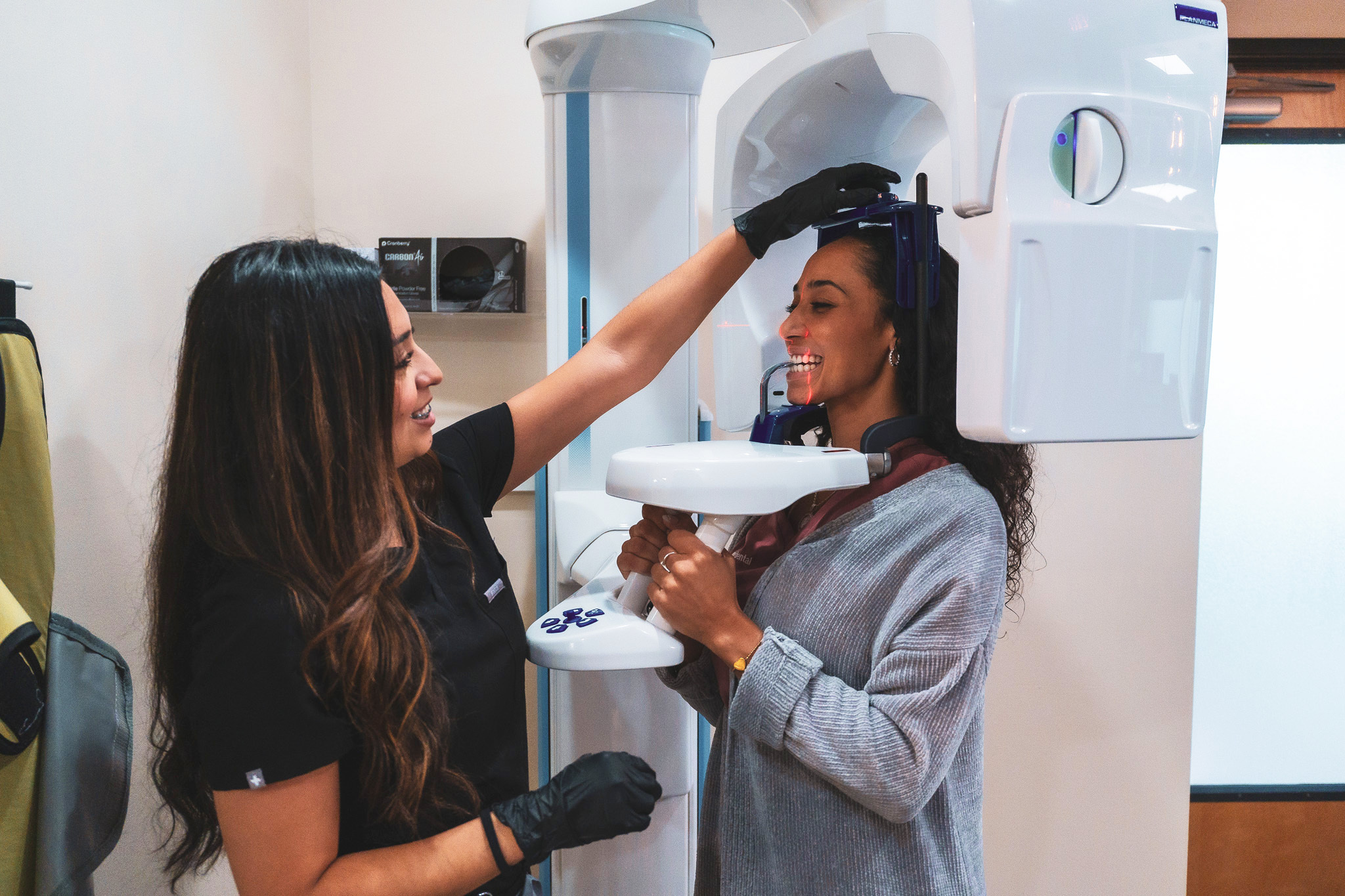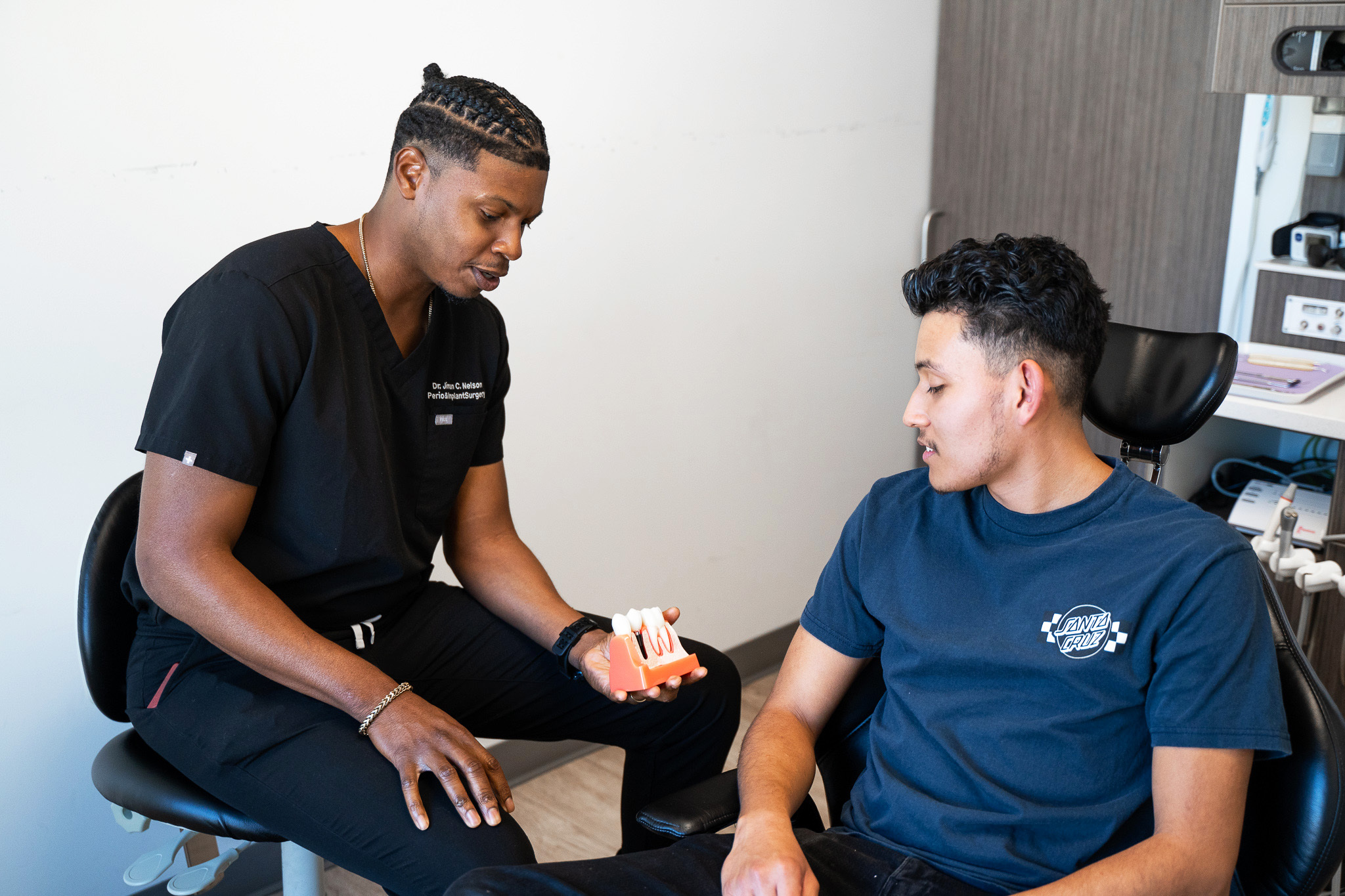For many years it has been possible to replace teeth that have been lost, but it was always believed that damage to the gums was going to be permanent.
For many years it has been possible to replace teeth that have been lost, but it was always believed that damage to the gums was going to be permanent. Now, this is no longer the case and they can be treated via a gingival gum graft – medically referred to as gingival graft. There are a number of different procedures that are covered by this description and they will be carried out to deal with various conditions. It is not something that you will be aware of in the early stages and be able to correct. As it comes on slowly, the changes will be minimal and by the time you are aware of it, it could be time for dental intervention.
Have Your Gums been Damaged Through the Years? URBN Dental can help.
The most common reason for requiring a gingival graft will be to reverse the appearance of receding gums. Another name for the treatment is periodontal plastic surgery. Not only does this look unsightly, but it can be painful. When the gum moves away from the bottom of the tooth there is the risk that the root will become exposed. There can be pain felt when there is something hot or cold taken in and also when there is a sharp intake of cold air. It is hard to describe how painful this can be, and it has to be felt to be understood. The bigger risk is an infection that can enter the tooth and if this is not caught in time, it will lead to tooth loss.
The longer this goes on the bigger the risk that further damage will be done. The bone can become damaged, as can keratinized tissue and in the worst cases, will be lost for good. The gum graft surgery when carried out will use the existing keritinized tissue to cover and protect the exposed gum roots and they will end up securely back in the jaw where they belong. If the work is not carried out there will be ongoing issues and the ultimate event will be the loss of at least one tooth and a very high risk of infection and damage to the bones which would lead to the loss of more teeth.
There are a number of things that can cause issues with the teeth and lead them to requiring gingival grafts. For the more unfortunate ones, it can be a hereditary issue, and there is little or nothing that they can do to prevent it. Others will bring the problem upon themselves. If they do not look after the teeth well enough, the gums start to recede, and the damage occurs. It is not always lack of cleaning that is an issue, but often being too vigorous with the toothbrush.
Diabetics are also at risk and once this illness has been confirmed, it is vital that regular checks are made to the teeth to see if the gums are moving and the teeth are looking longer. As you get older and hormones change, there is also the risk that damage will occur. As with many conditions, smokers are going to have a much higher risk than others. Giving up smoking will stop the disease progressing and may negate the need for a graft if the damage is not too bad. The one that it will not do is to reverse the damage that has already been caused.

Discuss with URBN Dental’s Top-Rated Dentist if a Gum Graft is the correct procedure for the needs of your gums.
It will take a dentist to carry out this work and it has to be said that it can be painful and inconvenient until it is completely healed. There will have to be a piece of skin taken out of the roof of the mouth. It will then be stitched into the gum to cover the gap that has appeared. There are a couple of problems that arise for dentists who have to carry out the procedure. Firstly, there is not a lot of skin that can be used and secondly there is a high rate of graft death. If the graft does not take, it will have to be redone, or failing that, the condition often has to be lived with.
There is a third option that is further used in some hospital settings, but this is one that many people are uncomfortable with. The skin can be harvested from human tissue on a medically regulated level. It is likely that there can be a larger piece of skin collected as there is no need to be concerned about the future viability of the mouth, but then there are the dual risks of cross infection of diseases and also rejection. This should never be carried out without the patient being fully aware and also told what the risks are likely to be.
Despite the risks of failure and the problems that can be faced when it comes to collecting the necessary gingival tissue, it is not one of the more major dental procedures that are carried out. The problems come afterwards when there is pain. As you would imagine, there will be more pain if the graft is taken from your own mouth rather than that of a donor.
The benefits will be immediately clear. Any pain that is felt after treatment will be temporary, whereas the pain of not dealing with the recession will be long lasting and lead to other complications. The additional surgery and cost of needing teeth replaced will outweigh the issues brought about as a result of a gingival graft.

The appearance of the teeth will also be better. It is obvious when gums are receding, and the smile will be a lot less attractive without a graft than it will be with one. Speech may not be affected as a result of the condition but may become less clear if you are trying to keep your mouth partially closed to cover the appearance. This may not be a pleasant procedure to go through, but once completed it is certainly worthwhile and will make a big difference to your life.
Are your Teeth ever senistive to hot or cold?
You can go back home and resume regular non-strenuous activities immediately after the treatment. However, it’s possible that the dentist will put you under sedatives or painkillers, so you should arrange for a taxi or for someone else to take your home. You will also be given specific information about post-procedural care in regards to your diet, the levels of permissible physical activity, and medicines.
Generally speaking, you should follow these recovery tips following the treatment:
The amount of pain you experience after the
treatment will depend entirely on the procedure and the type of treatment for gum graft surgery. If there’s been no tissue removal from the back of the mouth, there won’t be any pain either. However, if some tissue has been removed from your palate, you will experience some discomfort. The wound at the back of your mouth may be similar to the sensation you get after burning your palate on a hot steaming food. However, the wound will heal pretty quickly, especially if you follow all of the aforementioned advice. You may also be prescribed anti-inflammatory pain medicines to ease some of the discomfort.

Houston | Katy | Montrose | West University Place | Greater Third Ward | Greater East End | North East Houston | Houston Heights | Central Northwest | Fairbanks | Acres Home | East Houston | Southeast Houston | Central Southwest | Fort Bend Houston | Brays Oaks | Meyerland Area | Sharpstown | Alief | Westchase | Memorial | Northwest Houston | Katyland | Whispering Lakes | Pine Lakes | Woodcreek Reserve
At URBN Dental, we make sure that our patients don’t suffer from any pain or discomfort either during or after the procedure. If you are experiencing any undue pain, contact your dentist immediately and they’ll take the necessary measures to help you.
No Insurance? No problem.
© Copyright 2025 | Designed & SEO Optimized by The Doctors Marketing
Disclaimer: URBN Dental uses restorative materials such as Admira Fusion® by VOCO, which are free of BPA and Bis-GMA, and are not known to degrade into microplastics under normal oral conditions. While marketed as biocompatible and free of traditional plastic monomers, no dental material is guaranteed to be completely risk-free for all patients. This information is provided for educational purposes and does not constitute medical or regulatory advice.

Discover your perfect smile with a FREE Invisalign assessment.

Receive a complimentary 3D scan ($300 value) when you proceed with implant care.

Speak with our experts about your smile goals from the comfort of your home.
Discuss your smile goals with our experts—choose an in-office visit or a convenient 15-minute phone consult.

Quick, affordable care when you need it most.

Have questions about implants? Get personalized guidance in a brief phone call.